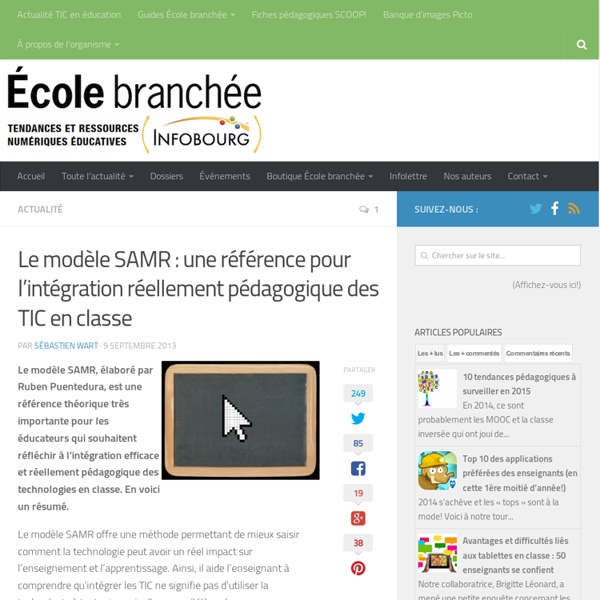



4 Different Visual Guides To Bloom's Taxonomy I recently received a question from a reader who wasn’t clear about what exactly Bloom’s taxonomy is. It got me thinking that perhaps not everyone is a Bloom’s taxonomy expert, and a little bit of a refresher might be helpful. In later posts, we’ll look at a variety of iterations and interpretations of the traditional Bloom’s graphic, along with apps and tools that address Bloom’s objectives in our modern classrooms. In a nutshell, Bloom’s taxonomy is a grouping of educational objectives that first came about in 1956 in an attempt to classify educational objectives. The original looked like this:
Flip This: Bloom’s Taxonomy Should Start with Creating Teaching Strategies Chris Davis, Powerful Learning Practice LLC By Shelley Wright I think the revised Bloom’s Taxonomy is wrong. I know this statement sounds heretical in the realms of education, but I think this is something we should rethink, especially since it is so widely taught to pre-service teachers. I agree that the taxonomy accurately classifies various types of cognitive thinking skills. The Big Picture Of Education Technology: The Padagogy Wheel The Big Picture Of Education Technology: The Padagogy Wheel by TeachThought Staff Teaching is a matter of design. That’s not new, but in an era of change and possibility, it’s more apparent now than ever. 5 Ways Schools Can Make Learning Relevant for Students By Tanya Roscorla on November 10, 2014 Eric Sheninger talks about how to make learning work for students at TedxBurnsvilleED. Screenshot of the talk by Tanya Roscorla
The Difference Between Technology Use And Technology Integration Bring TeachThought Professional Development To Your School! The Difference Between Technology Use And Technology Integration by TeachThought Staff Using technology for learning makes sense. Technology creates access, transparency, and opportunity. Any smartphone or tablet is media incarnate–video, animation, eBooks, essays, blog posts, messages, music, games. The Move is On! From the Passive Multimedia Learner to the Engaged Co-creator Despite the promise of great things, the actual integration of information and communication technologies (ICT) in education has led to dashed hopes and myth-making with regard to their potential for improving learner motivation and achievement [1, 2]. The integration of ICT in education has also led to a polarization among educators, creating "techno-enthusiasts" who boldly support the integration of educational technologies by default [3], and "technophobes" who oppose their integration on a variety of grounds, be they pedagogical, technological or resource-based [4]. Such a polarization usually stems from an overly techno-centric vision [5] that expects technology will automatically produce pedagogical benefits without taking into consideration all of the components in a given learning situation [6, 7] or learning activity [8]. Using ICT to Foster Learning Learning does not occur in a vacuum. The Passive-Participatory Model